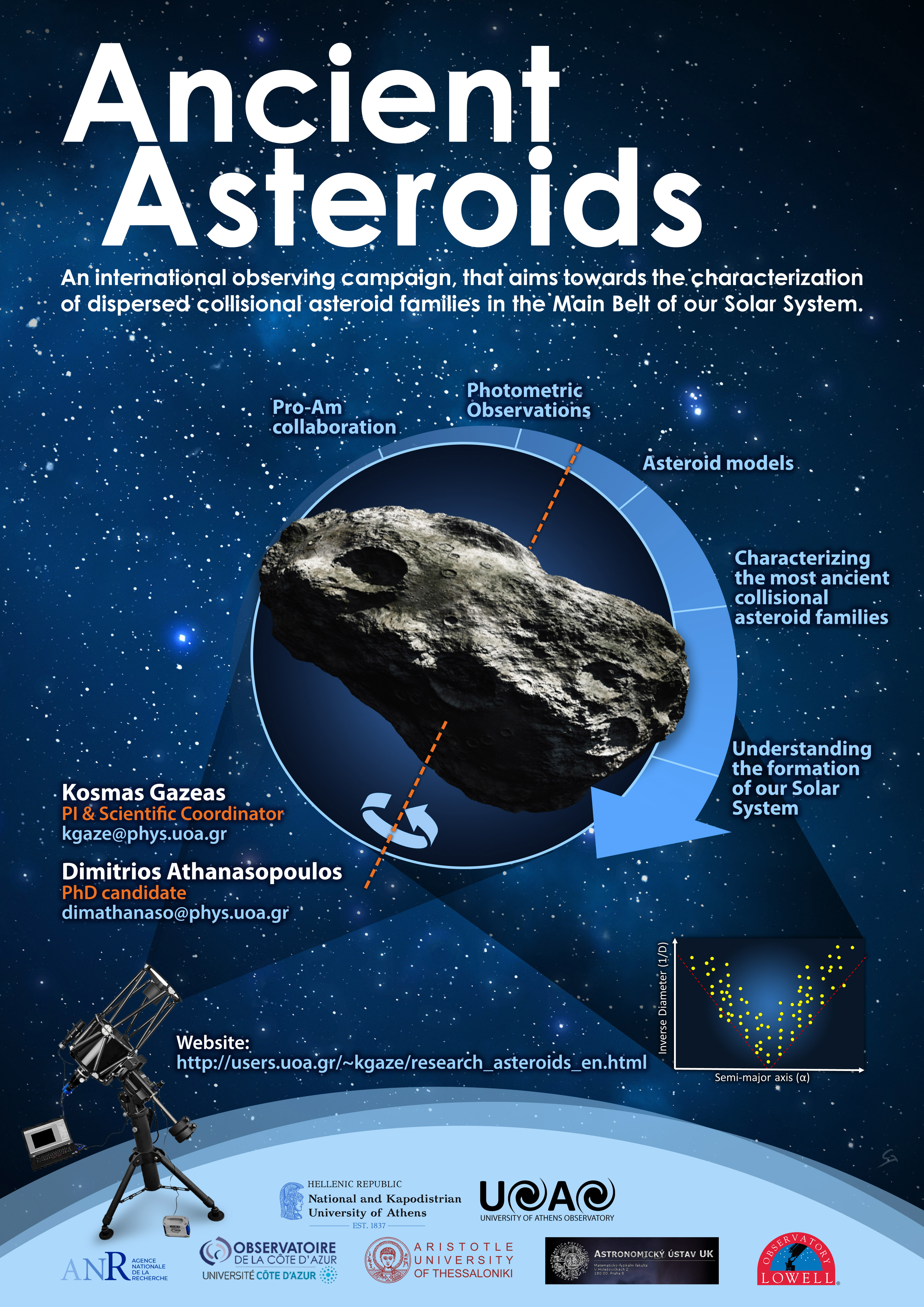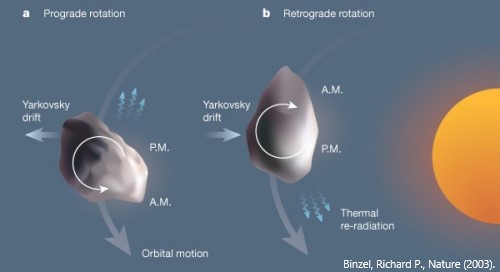Ancient Asteroids is an international observing campaign that aims towards the characterization of asteroids, which are members of the most ancient and dispersed collisional asteroid families in the Main Belt of our Solar System.
The project was initiated in 2020 at the University of Athens Observatory (UOAO) in Athens, Greece by Dr. Kosmas Gazeas, in collaboration with the Observatoire de la Côte d’Azur (OCA) in Nice, France, the Aristotle University of Thessaloniki in Thessaloniki, Greece, the Astronomical Institute of the Charles University in Prague, Czech Republic, the Lowell Observatory in Arizona, United States, and the BSA Observatory in Savigliano, Italy.
The project will also contribute valuable information to the Minor Planet Physical Properties Catalogue (MP3C) program that collects information about the physical properties of asteroids in general.
An observing campaign that reveals the nature of the most ancient asteroids
An innovative technique based on the so-called "V-shape" is being developed for seeking ancient asteroid families (Walsh et al. 2013; Bolin et al. 2017, Delbo et al. 2017, 2019). This technique looks for correlations between orbital position and asteroid’s size, which helps in the identification of possible old dispersed collisional families. Τhe rotation state (spin) and the size/shape of asteroid members of the oldest families can be determined, through continuous photometric observations. The rotation state determines and confirms the membership of an asteroid into a given family and gives insights into the evolution of the family to which the asteroid belongs.
The Yarkovsky effect is a thermal radiation force that acts on small Solar System bodies.
The research institutes and observatories mentioned above, along with an international network of amateur astronomers perform photometric observations of a very specific sample of the most ancient asteroids. The obtained lightcurves from all the involved participants will be combined with data available in the literature, as well as with sparse data from space missions (Gaia, TESS etc) and global sky surveys (PTF, LSST, ATLAS etc). Since these very old families were formed before and immediately after the giant planet orbital instability, this research aims to give insights into the first stages of the evolution of the Solar System, the size distribution of the original planetesimals, the mechanism at the origin of the formation of the asteroids and the planet formation processes.
Ancient Asteroids Project wishes to shed light on the Solar System formation, through an international Pro-Am collaboration.
Contact the team
If you wish to participate to the observing campaign, visit the relevant page and Get Involved into the project!
Any questions, queries or other communication, related to the Ancient Asteroids project, should be addressed to:
Kosmas Gazeas
PI and Scientific Coordinator, National and Kapodistrian University of Athens
kgaze@physics.auth.gr, kgaze@phys.uoa.gr
AND COPY to:
Dimitrios Athanasopoulos
PhD candidate, National and Kapodistrian University of Athens
dimathanaso@phys.uoa.gr
The email should have the title: "Ancient Asteroids", otherwise it will be omitted.

